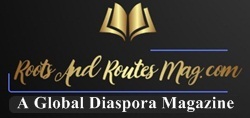From Folklore to Pop Culture: Evolution of Traditional Beliefs

Across the tapestry of human history, traditional beliefs have woven intricate patterns, shaping cultures, societies, and individuals. From the whispered tales of ancestors to the grand stages of modern entertainment, these beliefs have endured, evolved, and adapted, reflecting the ever-changing landscape of human experience. In this exploration, we embark on a journey through time and culture, unraveling the threads that connect folklore to pop culture, illuminating the enduring power and dynamic nature of traditional beliefs.
Folklore: The Roots of Belief At the heart of every culture lies its folklore – a tapestry of myths, legends, and oral traditions passed down through generations. Rooted in the soil of ancient wisdom and steeped in the colors of cultural heritage, folklore serves as the bedrock upon which beliefs are built. Whether it’s the tales of gods and heroes in Greek mythology or the fables of Anansi the Spider in African folklore, these stories serve not only as entertainment but as a means of understanding the world and imparting moral lessons.
Folklore often embodies the collective wisdom and values of a community, offering explanations for natural phenomena, human behavior, and the mysteries of existence. Through storytelling, song, dance, and ritual, folk traditions foster a sense of belonging and identity, reinforcing social cohesion and transmitting cultural heritage from one generation to the next. Moreover, folklore provides a lens through which individuals navigate life’s challenges, offering guidance, solace, and inspiration in times of need.
The Evolutionary Leap: From Folklore to Pop Culture As societies evolve and cultures collide, traditional beliefs undergo a metamorphosis, adapting to new contexts and mediums of expression. One of the most significant transformations in recent centuries has been the transition of folklore into pop culture – a phenomenon fueled by technological advancements, globalization, and the democratization of media.
In the age of mass communication, folklore finds new avenues of expression through literature, theater, film, television, music, and digital media. Myths and legends once confined to the oral tradition now leap off the page and screen, captivating audiences around the world. From the epic adventures of superheroes in comic books to the reimagined fairy tales of Disney animated films, traditional motifs and archetypes permeate popular culture, resonating with audiences across diverse backgrounds.
Moreover, pop culture serves as a dynamic arena where traditional beliefs intersect with contemporary issues, reflecting and refracting the zeitgeist of the times. Through allegory, satire, and symbolism, creators explore timeless themes of love, loss, power, and redemption, imbuing ancient narratives with new relevance and resonance. Whether it’s the environmental allegory of “Avatar” or the feminist reimagining of “Wonder Woman,” pop culture provides a platform for reinterpreting and reinvigorating traditional beliefs in the light of modern sensibilities.
The Power of Adaptation: Traditional Beliefs in the Digital Age In the digital age, traditional beliefs undergo a further transformation as they migrate from the realms of imagination to the interactive landscapes of video games, virtual reality, and social media. From role-playing games that immerse players in mythic quests to online communities that reinterpret folklore through memes and fan fiction, digital platforms offer new opportunities for engagement and participation.
Moreover, the internet serves as a virtual agora where folkloric traditions are preserved, shared, and reinvented by a global community of storytellers. Through platforms like YouTube, podcasts, and blogs, individuals connect across borders and boundaries, exchanging tales, legends, and rituals with unprecedented ease. In this digital bazaar of ideas, traditional beliefs evolve in real-time, shaped by the collective creativity and collaboration of users from diverse cultural backgrounds.
Conclusion: From the campfire to the silver screen, from the printed page to the digital frontier, the evolution of traditional beliefs from folklore to pop culture reflects the enduring human impulse to make sense of the world through stories. As old myths mingle with new media, as ancient archetypes find expression in contemporary forms, traditional beliefs continue to resonate with audiences around the globe. In this ongoing journey of adaptation and innovation, the threads of tradition weave a tapestry that transcends time and space, connecting past, present, and future in a colorful mosaic of human imagination and creativity.

Tariq Riaz is a passionate web developer and content generation expert.









